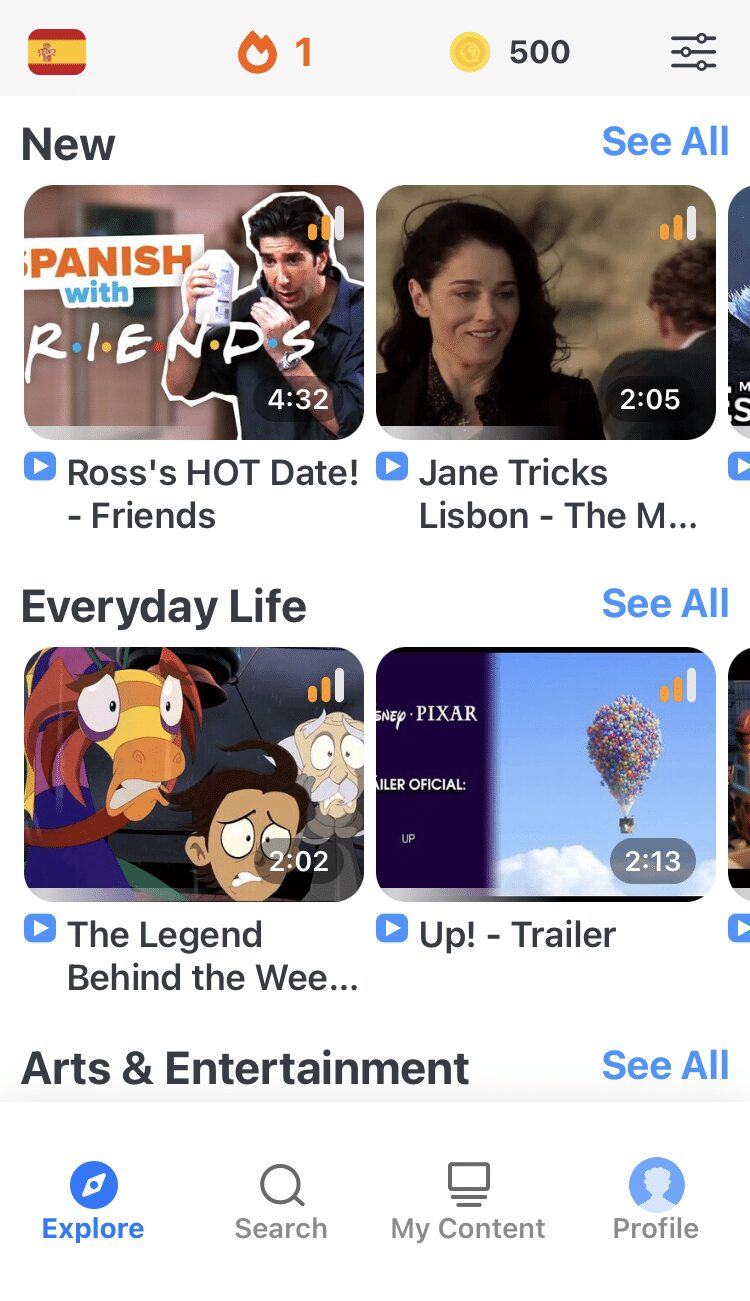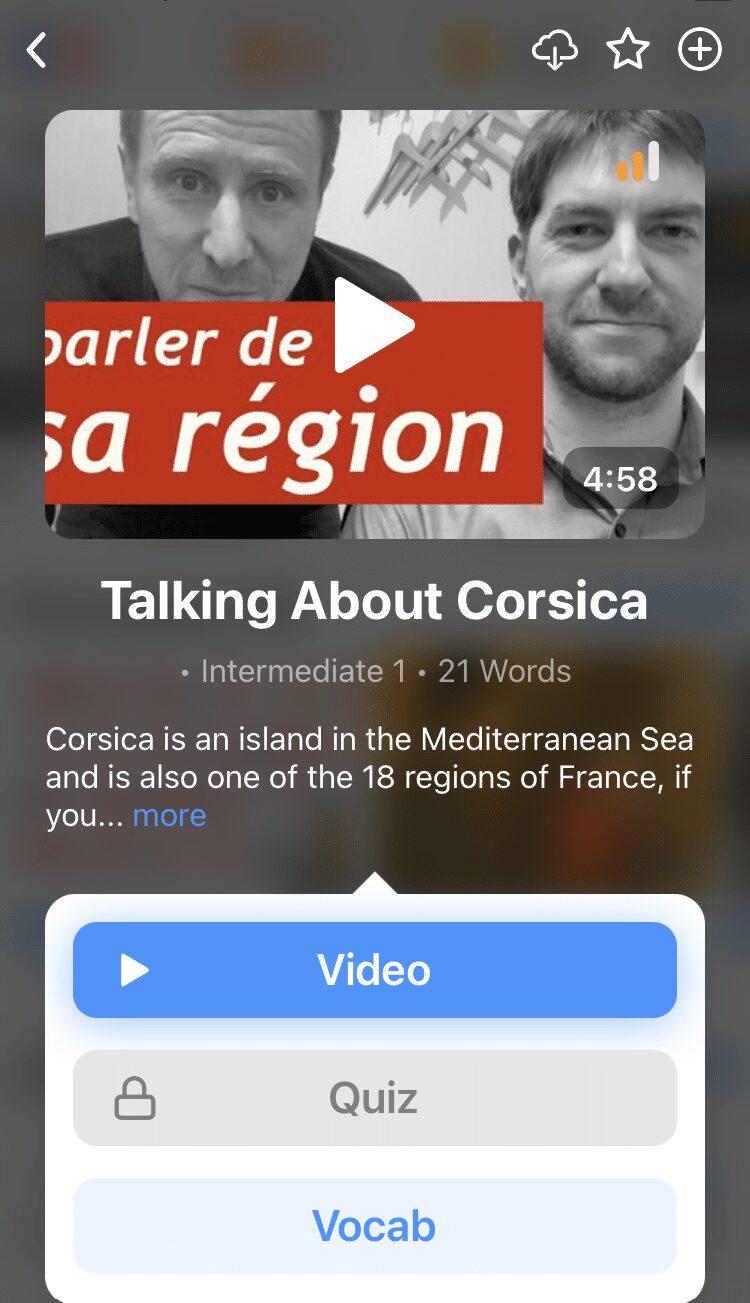Contents
- 1. Transfer Your Reading Skills from Your Native Language
- 2. Split Your Time Between Focused Reading and Relaxed Reading
- 3. Do Group Reading
- 4. Use Focused Reading Strategies
- 5. Read Aloud
- 6. Do Timed Reading Activities
- 7. Use Context
- 8. Read Different Types of Texts
- 9. Focus on Vocabulary
- And One More Thing...
How to Read More Smoothly in a Foreign Language

When it comes to learning a new language, reading may come much more naturally than learning tons of new vocabulary or sharpening up your listening comprehension skills. Basically, you get better at reading by reading—it’s essentially learning by doing.
Of course, there are a few tricks you’ll want to use along the way to make your reading as efficient, effective and painless as possible. Try these nine effective methods to up your reading in a foreign language game quickly.
Download: This blog post is available as a convenient and portable PDF that you can take anywhere. Click here to get a copy. (Download)
1. Transfer Your Reading Skills from Your Native Language
If you can read one language, you can read them all—sort of. Studies have suggested that to a certain extent, reading skills actually transfer from one language to another.
In other words, learning reading in a foreign language is partly just a matter of learning to read in your native language, learning to speak the foreign language and then putting the two together. However, the catch is that your reading skills only start to transfer in a serious way once you reach a basic level of proficiency in your new language.
Therefore, in the early stages of your language learning, focus on becoming familiar with the language, expanding your vocab and getting a feel for the grammar.
Once you have the fundamentals down, start practicing reading more intensively. With a solid grasp of the basics of the language and reading muscles already toned from a lifetime of putting up with written English, you’ll find it’s not too hard to put two and two together.
2. Split Your Time Between Focused Reading and Relaxed Reading
You might think the fastest way to learn to read in a foreign language would be to always choose the hardest texts you can find and power through them with a dictionary in hand. It turns out, though, that one of the most important factors in how well you learn to read is simply how much you read. And if you’re always trying 110%, you’re not going to have the stamina to do the kind of voracious book tackling that you need to polish your reading skills.
Learning to read in a foreign language is definitely a task where one of the golden rules of language learning applies: If you’re working too hard, you’re either going to get bored, or you’ll get worn out, not making it to the fun parts of the language.
So the trick is to divide your time between the kind of intensive, grinding-your-teeth-and-clutching-a-dictionary reading that pushes the limits of your abilities and the kind of Sunday-afternoon-lounging-in-an-armchair-enjoying-a-nice-book reading that lets you put in foreign language reading hours while having a good time.
For the focused reading, pick material that will give you a good challenge, and take the time to untangle the bits you don’t understand. For the relaxed reading, the point is just to read as much as possible, so go for texts that are easier to get through and that are about topics you’re interested in.
You might want to plan out in advance how you’re going to split you’re time between focused reading and relaxed reading. For example, you might chill with some no-big-deal reading 80% of the time and going full blown language-learner-wielding-flashcards-and-not-afraid-to-use-them with a copy of “War and Peace” the other 20% of the time.
3. Do Group Reading
Reading is fun, but it can get lonely.
Doing group readings is a great way to make burying your face in a book a social activity. Just get a group of like-minded language learners together, and take turns reading aloud while everyone follows along with the written text. Call it a book club and you’re likely to be fighting off new members wanting to join.
There are two big advantages you get from group reading:
- Hearing someone read the words and following along visually at the same time connects your aural memory of how words sound with your visual impression of how they look on the page.
- You can pause every few pages or so and do a group recap or discussion (in the language you’re learning!) covering what you’ve read so far.
If you want to emphasize the discussion part of things, go the book club route and discuss away. And if you don’t know anyone learning your language, don’t let that deter you from forming a reading group—go on social media where language learners gather online, and there’s a good chance you’ll find people interested in either a real-life or virtual reading group.
4. Use Focused Reading Strategies
I’ve already talked about splitting your time between focused reading and relaxed reading, but the question remains: What exactly do you do when you’re doing focused reading?
One of my favorite strategies for parsing texts that stretch the boundaries of my reading comprehension is a method called “Re-Re-Re-Reading,” which involves reading a text four times, concentrating on different things each time through. The basic idea is to start off reading for the big picture, then work down to the details, then move back up to the big picture. Here’s how it goes:
Round 1: Get the gist of the passage
On the first pass-through, read for the gist. Just get a sense of what the text is about and a general feel for what’s happening. Don’t get too hung up on words you don’t know. However, depending on how opaque the passage is, you might have to look up words here and there even to get at the overall meaning.
Round 2: Go over in more detail, looking up words you don’t know
Pass two is the bring-out-the-toolbox-and-take-this-thing-apart round. This is when you do want to get hung up on the details, looking up all words you don’t know and making sure you understand how the grammatical structure of the text is working. This is when you break the thing down into its parts and figure out how each of those parts works.
Round 3: Put together all the new details you understand
After breaking the passage down into its details, you now want to put those details back together into a unified whole. This pass through the text is about synthesizing everything you learned in pass two about what individual words mean and how the grammar fits together.
You can think of this stage as reading for the gist, like in step one, while incorporating all the new information from step two. You want to read quickly enough to get a bird’s eye view of the whole passage, but do take enough time to integrate most of the new knowledge you gleaned from step two.
Round 4: Do a final recap, aiming for speed
In the fourth and final reading of the text, speed is the name of the game. Now that you’ve broken down the text and put it back together, the idea is to go through grasping the meaning as quickly as possible. Try to push yourself on this one, both in terms of holding onto the things you learned in step 2 and getting through the passage faster than you thought you could.
5. Read Aloud
When working on reading, it’s helpful to keep in mind that reading is really just an extension of speaking and listening. This fact is key to making reading the easiest thing you do in your foreign language studies.
One way to take advantage of the link between spoken and written language is to actually speak and listen while you read. Just speak whatever you’re reading out loud to yourself as you read it. When you make connections between listening, reading and speaking, all three will improve.
You can also try recording yourself on your phone’s voice memo app. Then listen back and see how you could improve your pronunciation, too. It never hurts to combine two language learning strategies at the same time.
6. Do Timed Reading Activities
If you want to keep yourself on your toes and challenge your brain to parse the words you’re reading a little more quickly, try some timed reading activities. Speed reading doesn’t need to be your goal, just reading less slowly than you used to and setting new personal bests is the most important thing.
You can do timed reading either by setting a timer while you read so you can see how long it takes you to get through a given text and calculate your reading speed in words-per-minute, or by giving yourself a predetermined amount of time to complete a passage.
Besides pushing your brain to process the text you’re looking at a little faster, timed reading will add a little excitement to your reading practice—which is never a bad idea, since boredom is the death of language learning.
7. Use Context
Context is the best language teacher you’ll ever have. Think about it: You learned your native language entirely from context.
When you’re reading, always try to take advantage of context as much as possible. Whenever you reach a word you aren’t familiar with, force yourself to guess its meaning before reaching for the dictionary, then look it up to see if you were right.
This is actually a good tip for all aspects of language learning, but it’s especially important for reading exercises, where you can find yourself reaching instinctively for the dictionary over and over. Forcing yourself to guess things from context turns language learning into a puzzle of sorts, and you’ll have a stronger memory for the words you can guess correctly from context than the ones you have to type into Google Translate to understand.
Context makes a huge difference in both your initial understanding and continued remembrance of information. With enough practice in analyzing context, you’ll instinctively come to rely on yourself and lessen the need to reach for a tool that will provide you with instant answers.
8. Read Different Types of Texts
Too many language learners skip over one of the most important parts of reading practice: choosing a wide variety of texts to read. Many of us have experience in a classroom where a teacher barks out phrases and chooses reading texts for us, often with not-so-helpful results.
It’s time to free yourself from the shackles of this approach and make your own destiny. First, we can divide books and other texts into two broad categories: academic and non-academic.
Academic writing
- Pros: typically follows all grammar rules, more likely to be focused on a particular subject area, useful for learning specialized vocabulary
- Cons: specialized vocabulary can create a hurdle to learning, less likely to resemble everyday usage of the language, not always appropriate for beginners
Non-academic writing
- Pros: has more in common with everyday usage of the language, vocabulary more likely to include common words and phrases, readers are more likely to be able to place the reading in context
- Cons: may contain local or regional colloquialisms and be less representative of the “universal” usage of the language
Both types of texts have their place, and deciding what you want to read is a matter of what you want to get out of the process.
For example, if you’re an engineer and your firm is opening a branch in a foreign country, read an engineering-oriented handbook in the target language.
Or if you’re just starting out and want to fully immerse yourself, read your favorite book translated into your target tongue. Books like “Harry Potter” and “Alice’s Adventures in Wonderland” have been translated into scores of languages. Don’t forget the power of enjoying what you read.
9. Focus on Vocabulary
Vocabulary can be the language learner’s arch nemesis. After all, how many times have you thought, “I’m so close to being fluent, if only I knew more words?”
For better or worse, vocabulary is a constant in the struggle to read proficiently. To deal with this issue, here are three strategies that you can use while (and before) reading:
- Look up key words beforehand. Skim the text first and look up any words that stand out as unfamiliar and important. Focus on words that appear in headings or that show up repeatedly throughout the text.
- Don’t look up other unfamiliar words as you read. Instead, underline them to look up later. This promotes a fluid reading style and pushes you to use context clues to understand the content.
- After reading through the first time, look up all underlined words. If possible, avoid using English when making note of the definitions. Instead, use related words in the target language or pictures/icons. Remember, your long-term goal is to read with understanding while “thinking” in the language rather than simply translating the words into English.
And how about retaining all of this vocabulary?
Flashcards
Flashcards remain one of the most tried-and-true methods. Spaced Repetition technology (SRS) used in flashcard apps greatly increases learning efficiency.
Contextualize new vocabulary
Place new words in their element using drawings and as many of your senses as possible. For example, to memorize the Spanish word el bombero (the firefighter), you might draw a firefighter conquering a blaze.
But try to also visualize the firefighter sliding down a pole, think of the smell of smoke, hear the crackling of a fire and feel the spray of a fire hose. The more contextual and sensual elements you can draw in, the better you’ll be able to retain and recall the vocabulary.
If you need extra visual context to help you remember text and vocabulary, you can try a language program like FluentU, as it pairs video content together with subtitles.
FluentU takes authentic videos—like music videos, movie trailers, news and inspiring talks—and turns them into personalized language learning lessons.
You can try FluentU for free for 2 weeks. Check out the website or download the iOS app or Android app.
P.S. Click here to take advantage of our current sale! (Expires at the end of this month.)
Mnemonic devices
Use mnemonic devices for difficult words. All of us who learn languages know the frustration of vocabulary that just won’t stick. For these problem words, try breaking up the syllables into a story of pictures.
For example, perhaps you can remember the German word wahrscheinlich by visualizing a war between pirates during which one crew member shines the captain’s shoes while battling a blood-sucking leech. Sound crazy? Maybe, but the crazier and more vivid the image you create, the easier it will be to recall the vocabulary.
It can seem intimidating to be confronted with a wall of text in a language you still have a tenuous grasp on, but if you use these strategies, you’ll see that reading in a foreign language is a skill that just naturally gets better with time if you let it.
And if you ever find yourself getting frustrated, just remember—you’ve already learned to read English, so you can do anything!
Next, check out this post on the best places to find foreign language books:
https://www.fluentu.com/blog/where-to-buy-books-in-other-languages/
Download: This blog post is available as a convenient and portable PDF that you can take anywhere. Click here to get a copy. (Download)
And One More Thing...
If you dig the idea of learning on your own time from the comfort of your smart device with real-life authentic language content, you'll love using FluentU.
With FluentU, you'll learn real languages—as they're spoken by native speakers. FluentU has a wide variety of videos as you can see here:
FluentU has interactive captions that let you tap on any word to see an image, definition, audio and useful examples. Now native language content is within reach with interactive transcripts.
Didn't catch something? Go back and listen again. Missed a word? Hover your mouse over the subtitles to instantly view definitions.
You can learn all the vocabulary in any video with FluentU's "learn mode." Swipe left or right to see more examples for the word you’re learning.
And FluentU always keeps track of vocabulary that you’re learning. It gives you extra practice with difficult words—and reminds you when it’s time to review what you’ve learned. You get a truly personalized experience.
Start using the FluentU website on your computer or tablet or, better yet, download the FluentU app from the iTunes or Google Play store. Click here to take advantage of our current sale! (Expires at the end of this month.)











